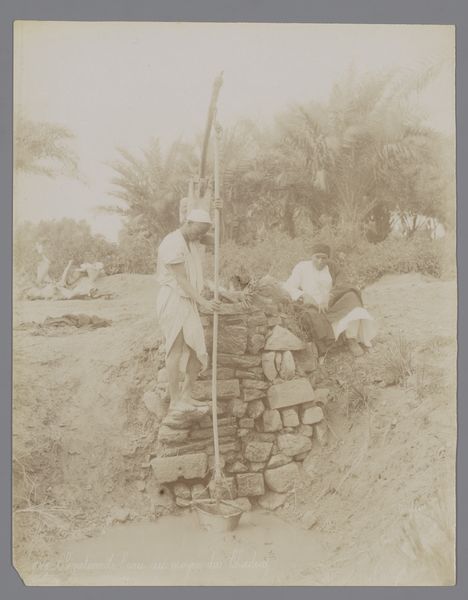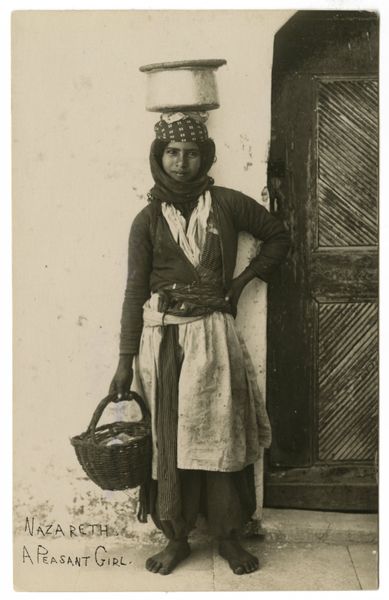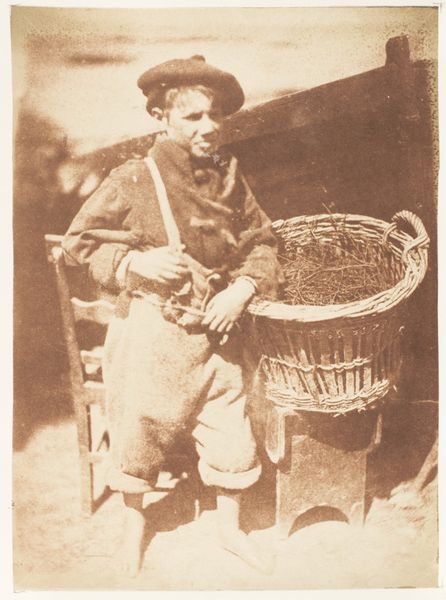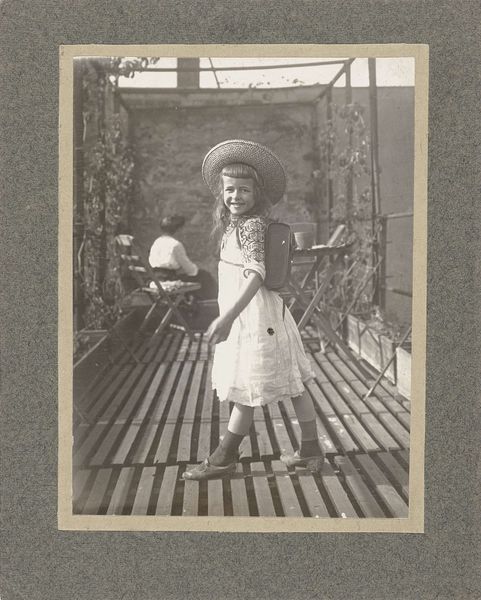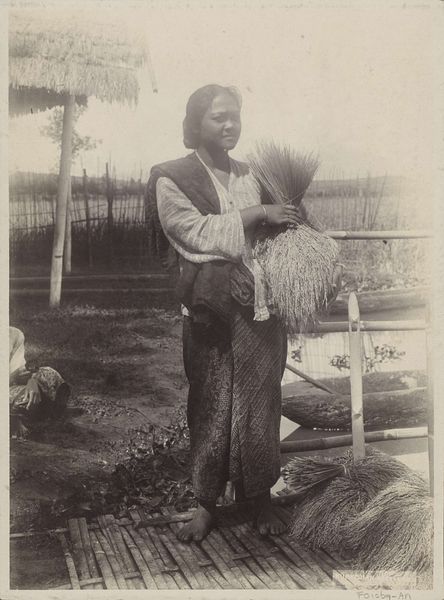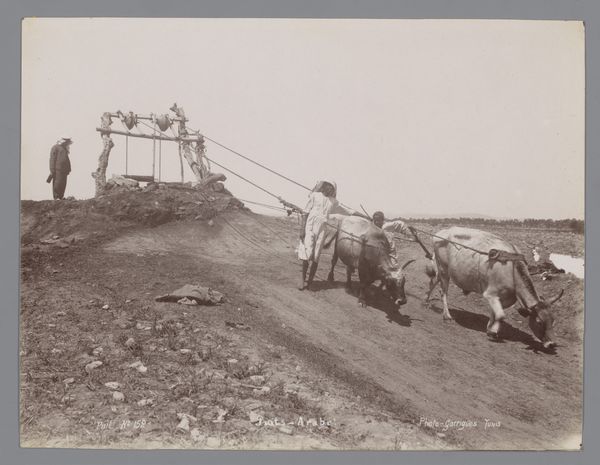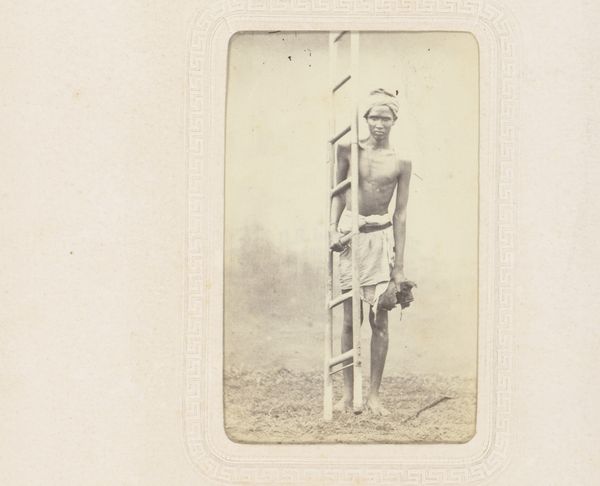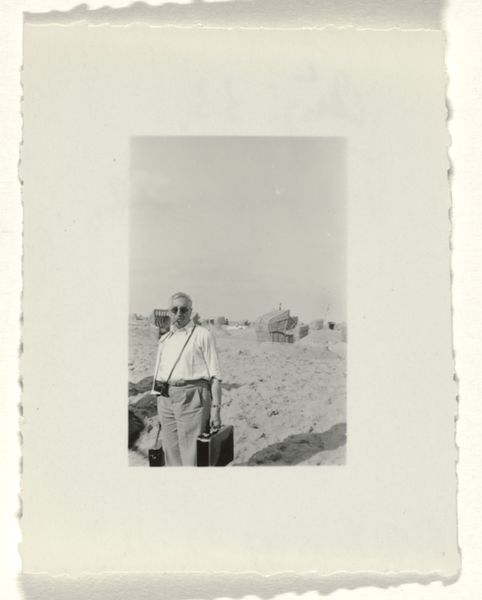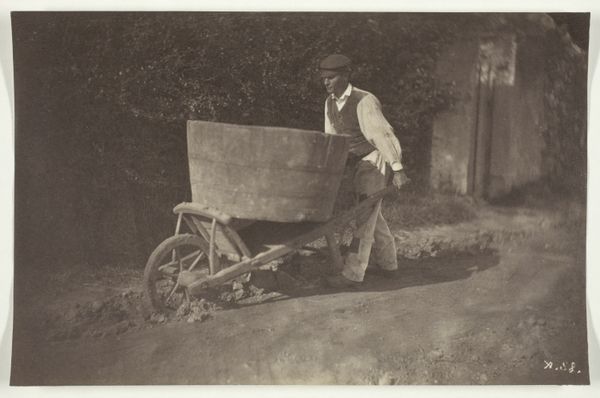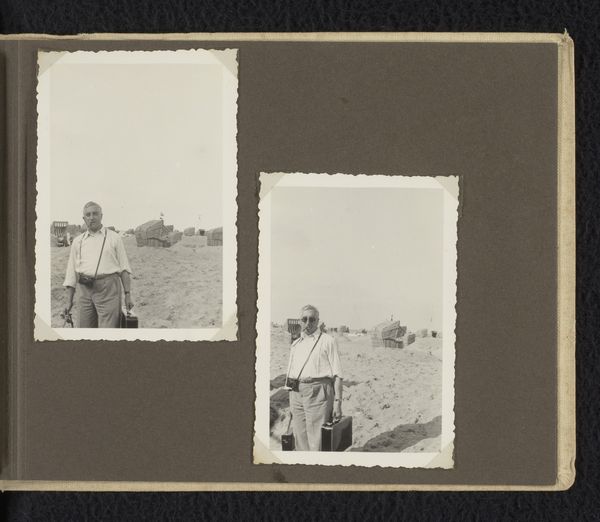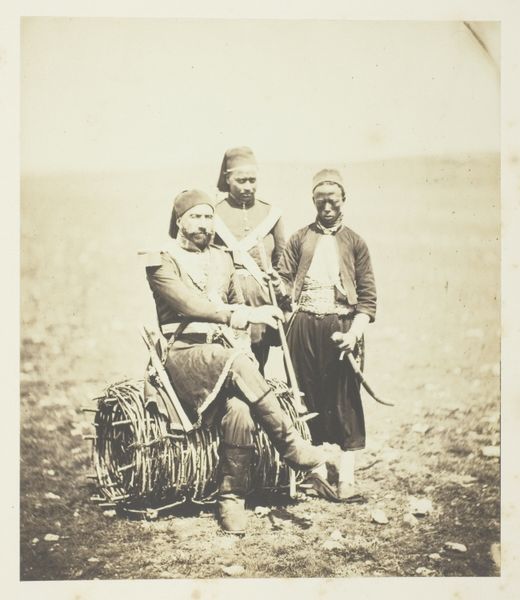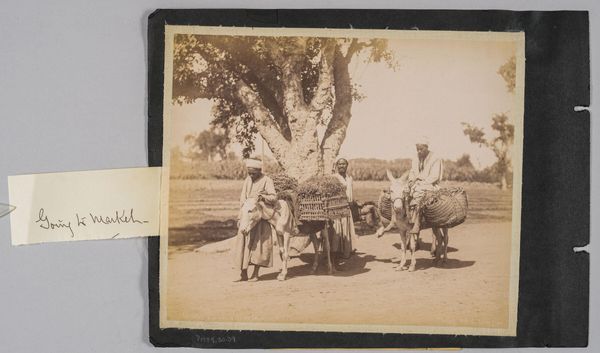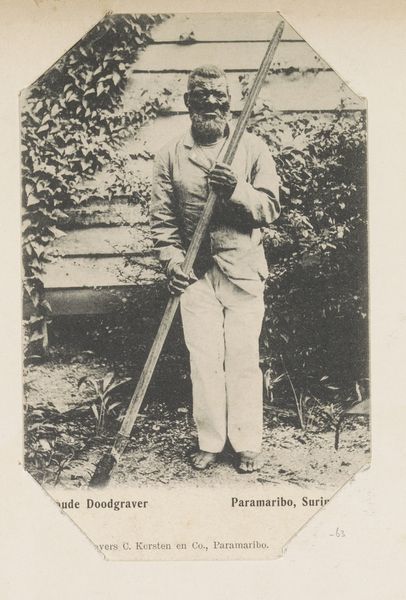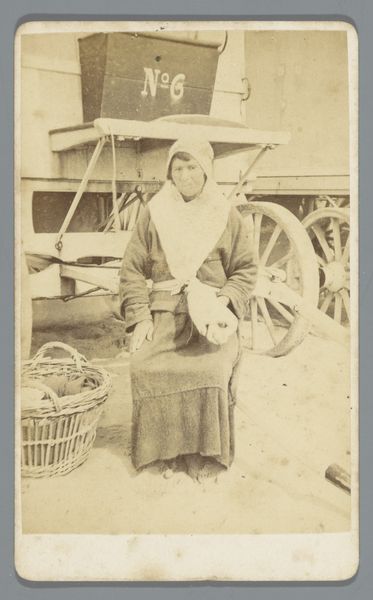![Landschap met jongen met een ploeg/gereedschap [?], Iran [?] by Antoine Sevruguin](/_next/image?url=https%3A%2F%2Fd2w8kbdekdi1gv.cloudfront.net%2FeyJidWNrZXQiOiAiYXJ0ZXJhLWltYWdlcy1idWNrZXQiLCAia2V5IjogImFydHdvcmtzL2Q5ZWMxMjRkLWY4ZGYtNGFhMS1iNTEzLWZhYjFkNjdmMjBjYi9kOWVjMTI0ZC1mOGRmLTRhYTEtYjUxMy1mYWIxZDY3ZjIwY2JfZnVsbC5qcGciLCAiZWRpdHMiOiB7InJlc2l6ZSI6IHsid2lkdGgiOiAxOTIwLCAiaGVpZ2h0IjogMTkyMCwgImZpdCI6ICJpbnNpZGUifX19&w=3840&q=75)
photography, albumen-print
#
portrait
#
landscape
#
photography
#
orientalism
#
islamic-art
#
albumen-print
#
realism
Dimensions: height 97 mm, width 90 mm
Copyright: Rijks Museum: Open Domain
Curator: This is an albumen print by Antoine Sevruguin, titled "Landscape with boy with a plow/tool [?], Iran [?]," created sometime between 1880 and 1910. Editor: My initial impression is of quiet strength. The monochromatic tones create a sense of stillness, but the young man's figure and the stark geometric form of his tool hint at the labour inherent in the landscape. Curator: The composition is carefully constructed. Note how Sevruguin has placed the figure slightly off-center, which creates a tension between the portrait and the environment. The diagonal lines of the device he uses pull the eye toward the horizon, drawing attention to the expansive landscape beyond. Editor: Let's think about the materiality for a moment: An albumen print involves coating paper with egg white, which gives it that subtle sheen and the beautiful tonal range. It allows for sharp detail which highlights the intricate construction of the tool the boy uses. It almost seems like an ancient weaving frame. One really appreciates how human ingenuity helps adapt our environments. Curator: Precisely. And consider the act of framing itself. Sevruguin, through this technology, isolates and elevates what might be considered a mundane scene. It’s a formal operation that gives us cause to study this interaction between man, object, and land with precision. Editor: How might the consumption of images like this play into ideas of "Orientalism"? Consider the work that went into documenting this particular image, what might be exoticized about that young worker and his equipment for consumption elsewhere? Curator: The photograph certainly invokes Orientalist sentiments, particularly for Western audiences unfamiliar with Iranian landscapes and tools. It freezes a moment in time, potentially perpetuating romanticized or stereotyped notions. At the same time, it can be viewed as valuable anthropological data, if approached with a critical lens. Editor: Ultimately, it reminds us of the interwoven processes of image-making, material culture, and the ever-changing social landscapes we inhabit. Curator: Agreed. It's an intersection of formal elements that create space for questioning representation.
Comments
No comments
Be the first to comment and join the conversation on the ultimate creative platform.
